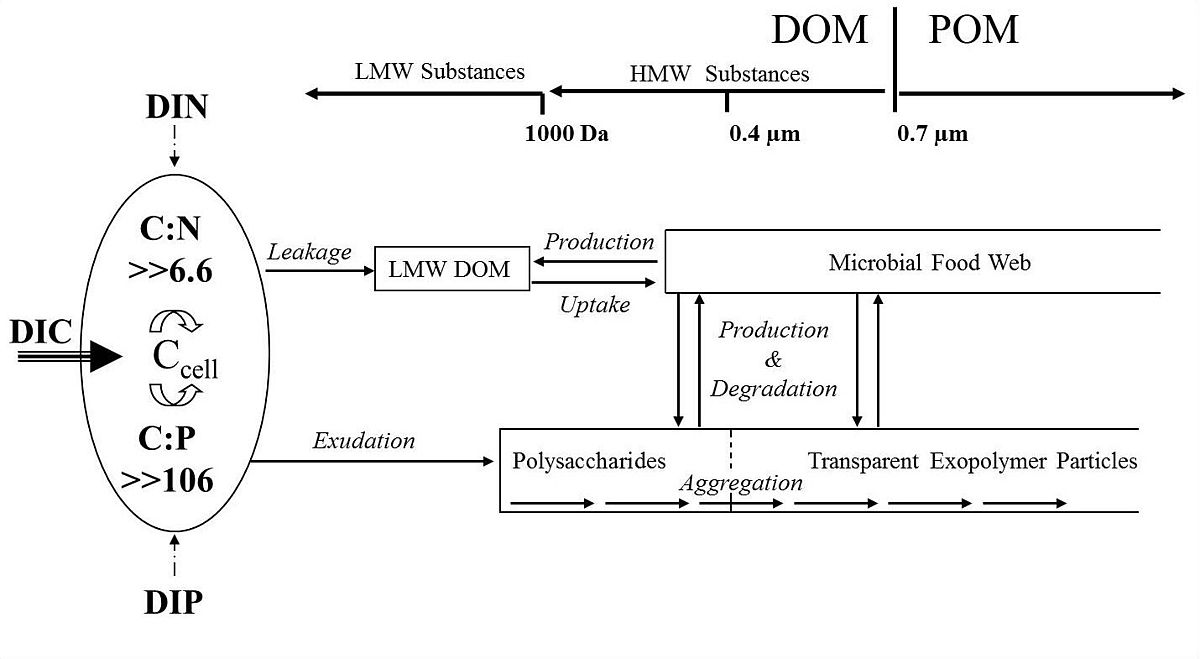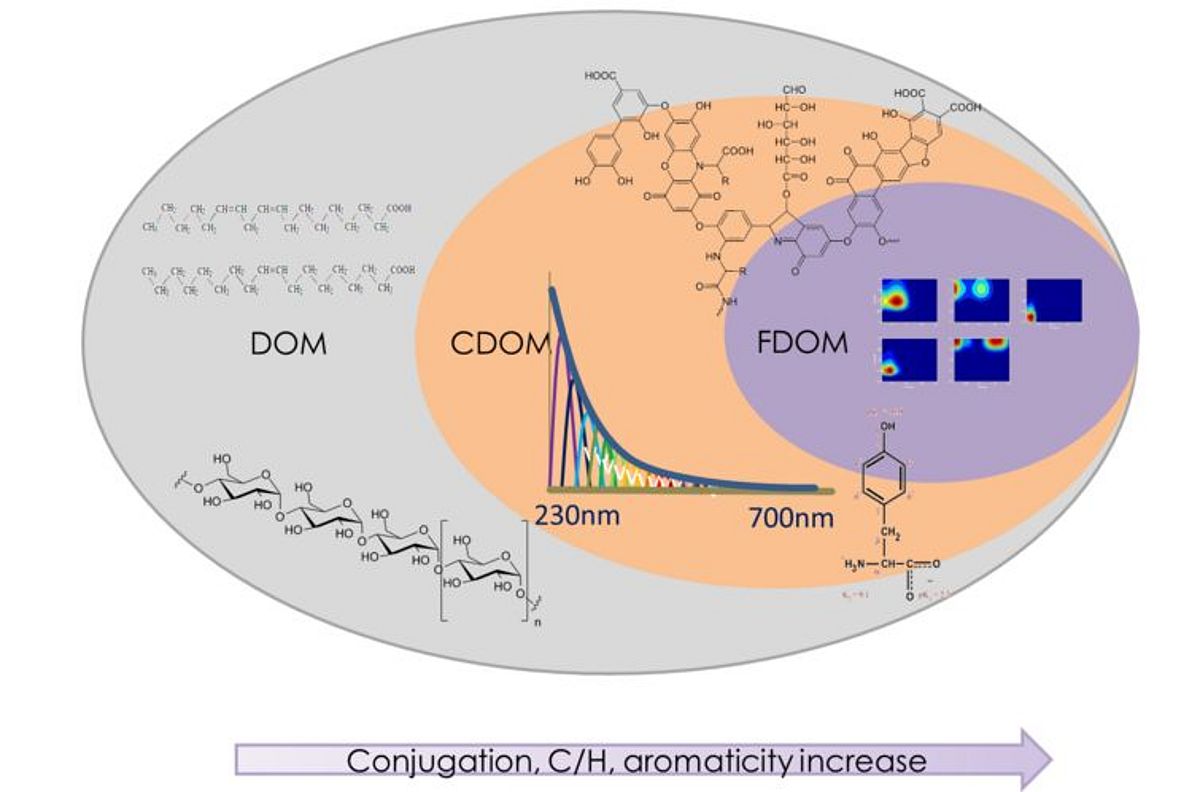Production and fate of dissolved organic matter
The euphotic zone is the principal site of organic matter production in the open ocean. Various mechanisms are responsible for DOM net accumulation in the ocean, such as phytoplankton release, grazer mediated release and excretion, release via viral or bacterial cell lysis, particle remineralization, release from prokaryotes. In water column, DOM undergoes numerous biotic and abiotic structural changes, resulting in formation of various organic compounds. Therefore, oceanic DOM is a complex mixture of molecules that are produced by biotic and abiotic processes in the ocean.
DOM is important for pelagic production as it may serve energy and nutritious source for marine heterotrophic communities. Readily bioavailable DOM is consumed within hours to days. The DOM fraction that is resistant to microbial degradation may stay in the ocean interior for months to millennia, therefore serving an important sink for atmospheric CO2.
An important sink of DOM is the formation of organic gels, i.e. transparent exopolymere particles (TEP) and Coomassie stainable particles (CSP). DOM can self-assemble and form porous microgels that can reversibly exchange material with DOM and particulate organic carbon (POM), or further aggregate into macrogels, thereby constituting an important link between the DOM and POM pools.
We study DOM distribution, composition, cycling and it’s partitioning to POM in climate relevant areas. As DOM is a complex mixture of organic compounds, we use several approaches to learn on DOM quality.
Chemically characterizable DOM compounds, such as carbohydrates (DCHO) and amino acids (DHAA) may serve up to 30% of dissolved organic carbon in the ocean. DCHO and DHAA represent the most labile/ semilabile fraction of DOM in the ocean and their residence time is relatively short (minutes to months) in the water column. DCHO and DHAA measurements give important information on bioavailability of DOM at open ocean sites and on microbial DOM consumption during incubation experiments.
The fraction of total DOM that absorbs light (230-700nm), i.e. chromophoric DOM (CDOM), and the fraction of CDOM that is able to fluoresce, i.e. fluorescent DOM (FDOM), give additional information DOM cycling. CDOM spectral properties and FDOM components may be used for studying changes in the relative molecular weight of DOM and also to discriminate between different organic matter pools, including as proteinaceous DOM as well as humic-like substances.
Projects:
- SFB754, TP B9 (PhD candidate Alexandra Loginova, Prof. Anja Engel)
- SOPRAN II and III (Prof. Anja Engel, Dr. Luisa Galgani)
- PEBCAO




